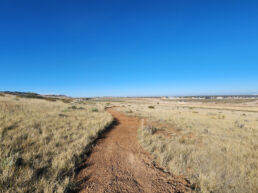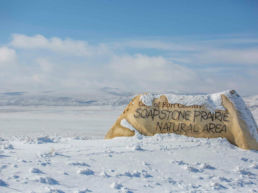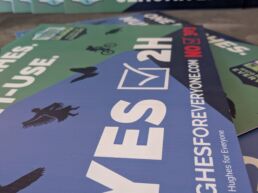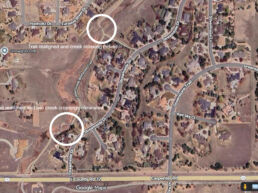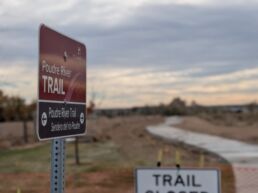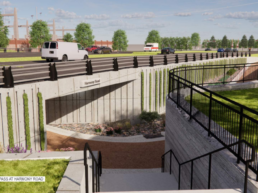
The guys/gals over at Source Endurance were kind enough to let me rerun their article on Nutritional Myths for Long rides with an emphasis on Gravel Grinders.
As we quickly approach the weekend of Dirty Kanza 200, along with many other long distance gravel events, it’s important to think about nutrition in addition to the riding component of your preparation to avoid the undesirable “bonk” and miserable crawl home. Cycling traditions include big pasta dinners the night before and eating when you are hungry the day of. While these strategies might work for you, some small tweaks might make that event even sweeter. Let’s evaluate five common myths for ultra-endurance events like long gravel races:
Nutrition Myth 1: Losing Weight Before My Event Will Make Me Faster And Climb Better.
Losing weight before your event can negatively affect your muscle glycogen, which is your primary energy source during a long endurance event like a gravel grinder. Keeping your muscle glycogen topped off the days going into the event is essential for an energy-filled ride. Be sure during rides leading up to the event that you eat within 30 minutes of finishing your ride.
Nutrition Myth 2: A Big Pasta Dinner The Night Before Will Fuel Your Gravel Grinder The Next Morning.
It’s pretty hard for your body to properly digest all that pasta, add it to your muscle glycogen, and have it ready to go just 12 hours later.. Rather, to avoid that race to the port-o-potty, four days before your event, start consuming normal protein and fat amounts, but higher carbohydrate amounts and do that for three days. The night before, eat normally.
Nutrition Myth 3: If I Need More Electrolytes, I Should Just Double The Drink Mix Scoops Per Bottle.
Using the brand-recommended ratio per bottle is important and allows for optimal absorption. If you make your drink mix too strong, your body has a hard time absorbing it and it can lead to gut issues and another race to the port-o-potty.
Nutrition Myth 4: I Should Mindfully Eat And Start Eating When I Get Hungry.
You should immediately start eating in an event like this because you’ll be burning more than you can put back in. No matter what, you’re glycogen stores will be dramatically reduced after four hours and your body will defend anything that is left to keep your brain functioning! Setting a timer for every 30 minutes, whether mental or actually setting it on your cycling computer, would be a good way to help you stay on it.
Nutrition Myth 5: I Should Eat Carbs, Carbs, And More Carbs During The Event!
For most people, adding in some protein whether as food or in a drink mix, will go a long way to prevent muscle breakdown and delay fatigue over a long event. The only time you’d want to only have carbohydrates would be if you were racing anaerobically only, which is impossible for this long of an event.
So What Should You Actually Eat During The Event?
Liquids:
If you are making your own drink mix bottles (versus at an aid station), shoot for a ~250 calorie 25 oz water bottle. Remember to look at the recommended drink-mix-to-water-ratio to avoid the gut distress! Go for a bottle an hour and alternate hours with water and real food.
If you are opting for something like a camelbak of water and getting electrolyte at aid stations, that’s fine too. Be sure to add in enough real food to get in enough overall calories. Avoid foods high in simple sugars.
Be sure to drink plenty of water in addition to the drink mix to keep you hydrated and aid with digestion of food.
Food:
Because you are already getting sugars in your drink mix, try to avoid simple sugars in the food you consume. Some popular and low stress foods might be a PB&J sandwich, ham and cheese sandwich or homemade energy bars….we recommend this customizable energy bar “formula” as a good place to start (and clear out the pantry!). Just remember, for food- eliminate the simple sugars and get some protein too.
There are a couple other items that help with delayed fatigue. The nitrates in beet juice have a lot of benefits such aid with glucose uptake and increase blood flow. Magnesium rich foods also aid with delayed fatigue and magnesium is in a lot of whole foods! Some examples include: dark, leafy greens, nuts and seeds, yogurt, bananas, figs, avocado, and brown rice.
Smoothies are also an easy to chug option and full of nutrients that are whizzed around and ready to be digested. Here’s our favorite recipe:
The Dirty Kanza Special
16 oz. coconut water or Almond milk
1/2 medium sized Avocado (protein/fat/carbohydrates, plus sodium, potassium, magnesium)
1/4 cup blueberries- (fiber and manganese)
1 serving (5g) BCAA powder or your favorite complete protein source
1/4 teaspoon salt
Blend up and have on ice.
We hope that dispelling these common myths makes your next gravel grinder all the more epic. Let us know what you think of the Dirty Kanza Special or your favorite energy bar combo. If you’d like to dive into more of the science behind the article, please read What Science Says About Nutrition for Long Distance Gravel Events.
 Grant Harrison grew up competing in a variety of sports including college football, competitive soccer and hockey. Since then things have switched all things cycling- in multiple disciplines to boot. His extensive Master’s education in Human Performance gives him a solid background in all things athlete-related. He’s focused on the delicate balance between pyschological skills, coaching, nutrition, and athlete performance. In addition to coaching services, he also offers one-on-one nutrition consultations. Learn more about Grant.
Grant Harrison grew up competing in a variety of sports including college football, competitive soccer and hockey. Since then things have switched all things cycling- in multiple disciplines to boot. His extensive Master’s education in Human Performance gives him a solid background in all things athlete-related. He’s focused on the delicate balance between pyschological skills, coaching, nutrition, and athlete performance. In addition to coaching services, he also offers one-on-one nutrition consultations. Learn more about Grant.

